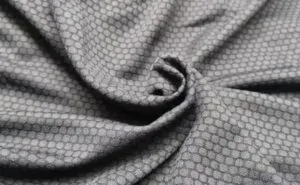
What is a clothing button?
A clothing button is a small but essential component of many garments. Buttons are used to fasten two pieces of fabric together, and are often found on shirts, blouses, jackets, pants, skirts, and dresses. Buttons come in a variety of shapes, sizes, and materials, and can be both functional and decorative.
The history of buttons can be traced back to ancient times, when they were made from materials such as bone, shell, and stone. The ancient Greeks and Romans used buttons to fasten their garments, and buttons were also used in Asia, Africa, and the Middle East. However, buttons did not become widely used in Europe until the 13th century, when they were introduced from the Middle East.
Today, buttons are made from a variety of materials, including plastic, metal, wood, and shell. The choice of material often depends on the function and style of the garment. For example, plastic buttons are often used on casual clothing, while metal buttons may be used on formal or military attire. Wood buttons may be used on rustic or eco-friendly garments, while shell buttons may be used on beachwear or other summer clothing.
Buttons can be either visible or hidden behind a placket or flap. Visible buttons can be decorative, adding a pop of color or texture to the garment. Hidden buttons, on the other hand, provide a cleaner, more streamlined look.
Buttons are typically sewn onto the garment by a thread, and can be either machine-sewn or hand-sewn. Machine-sewn buttons are more efficient, while hand-sewn buttons can provide a more secure attachment and are often used on high-end garments.
In addition to their practical function, buttons can also be used as a design element. They can be used to add a pop of color, texture, or pattern to a garment, or to create interesting shapes or configurations. Some garments, such as blazers or coats, may have decorative buttons on the sleeves or lapels, which add a touch of elegance and sophistication.
In conclusion, the humble clothing button may be small, but it plays a big role in the functionality and aesthetics of many garments. From its ancient origins to its modern-day iterations, the button has evolved to become an essential part of fashion design.

What are the different types of buttons in shirts?
There are several types of buttons commonly used in shirts, each with their own unique characteristics and functions. Here are some of the most common types:
- Sew-through buttons: These are the most basic type of button and are sewn onto the garment using a simple two-hole configuration. They can be made from a variety of materials, such as plastic, metal, or wood.
- Shank buttons: These buttons have a small loop or shank on the back that allows the button to sit slightly away from the fabric. This is useful for thicker fabrics, where a sew-through button may not lie flat. Shank buttons can also be more decorative than sew-through buttons.
- Stud buttons: Also known as snap buttons, these are composed of two interlocking metal pieces that snap together to fasten the garment. They are commonly used on casual or workwear garments, such as denim shirts.
- Covered buttons: These buttons are covered with the same fabric as the garment, giving them a seamless look. They can be made using a special button-making machine or can be covered by hand.
- Toggle buttons: These buttons have a bar-shaped loop on the front and a matching closure on the back that can be threaded through the loop to fasten the garment. They are commonly used on outerwear garments such as jackets or coats.
- Decorative buttons: These buttons are primarily used for their aesthetic value and may be made from unusual materials such as wood, bone, or glass. They can be used to add a pop of color, texture, or pattern to a garment.
Overall, the type of button used in a shirt will depend on the garment’s design, function, and overall style. The choice of button can significantly impact the look and feel of the shirt, making it an important consideration in fashion design.

What are the different types of button sewing?
There are different ways to sew a button onto a garment, and the choice of method depends on factors such as the type of button, the fabric of the garment, and the desired look. Here are some of the most common types of button sewing:
- Basic 2-hole sewing: This is the most common way of sewing a button onto a garment. Two parallel stitches are made across the two holes of the button, and the thread is then tied off on the back of the fabric.
- 4-hole sewing: This method is similar to basic 2-hole sewing, but two additional parallel stitches are made across the other two holes of the button. This creates a more secure attachment and is often used on heavier fabrics or larger buttons.
- Shank sewing: This method is used for shank buttons, which have a loop or shank on the back. The thread is passed through the shank, then through the fabric and back through the shank several times to create a secure attachment.
- Cross-stitch sewing: This method involves making an “X” shape with the thread across the button’s holes. It is often used for decorative buttons or for attaching buttons to lightweight fabrics.
- Zigzag sewing: This method involves sewing the button on with a zigzag stitch instead of a straight stitch. It is often used for buttons that will undergo a lot of stress or for attaching buttons to stretchy fabrics.
- Invisible sewing: This method is used to create a clean, hidden attachment for buttons. The thread is passed through the fabric and button, but not through the other side of the fabric. Instead, the thread is secured by creating a knot or stitch between the button and fabric.
Overall, the choice of button sewing method depends on the desired look and function of the garment, as well as the skill level of the person sewing the button. A well-sewn button can make all the difference in the overall appearance and durability of a garment.

What do you look for when choosing a button?
When choosing a button, there are several factors to consider, such as the garment’s design, fabric, and overall style. Here are some of the things to look for when selecting a button:
- Size and shape: The size and shape of the button should complement the garment’s design and proportions. For example, a small button may look lost on a bulky winter coat, while a large button may overwhelm a delicate blouse.
- Material: Buttons can be made from a variety of materials, such as plastic, metal, wood, or shell. The material should be durable and appropriate for the garment’s intended use. For example, plastic buttons may not be suitable for a high-end suit, while metal buttons may be too heavy for a lightweight blouse.
- Color and finish: The color and finish of the button should complement the fabric and color of the garment. For example, a shiny silver button may look out of place on a matte black blazer, while a matte black button may blend in too much with a black satin dress.
- Functionality: The button should be easy to fasten and unfasten, and should securely hold the garment closed. The size and thickness of the buttonhole should be appropriate for the size and shape of the button.
- Style: The style of the button should match the overall aesthetic of the garment. For example, a vintage-inspired blouse may look best with a decorative button made from natural materials, while a modern suit may look best with a sleek, minimalist button made from metal or plastic.
Overall, the choice of button can significantly impact the look and feel of the garment, making it an important consideration in fashion design. It is important to select a button that is appropriate for the garment’s design, fabric, and intended use, while also adding to its overall aesthetic appeal.







